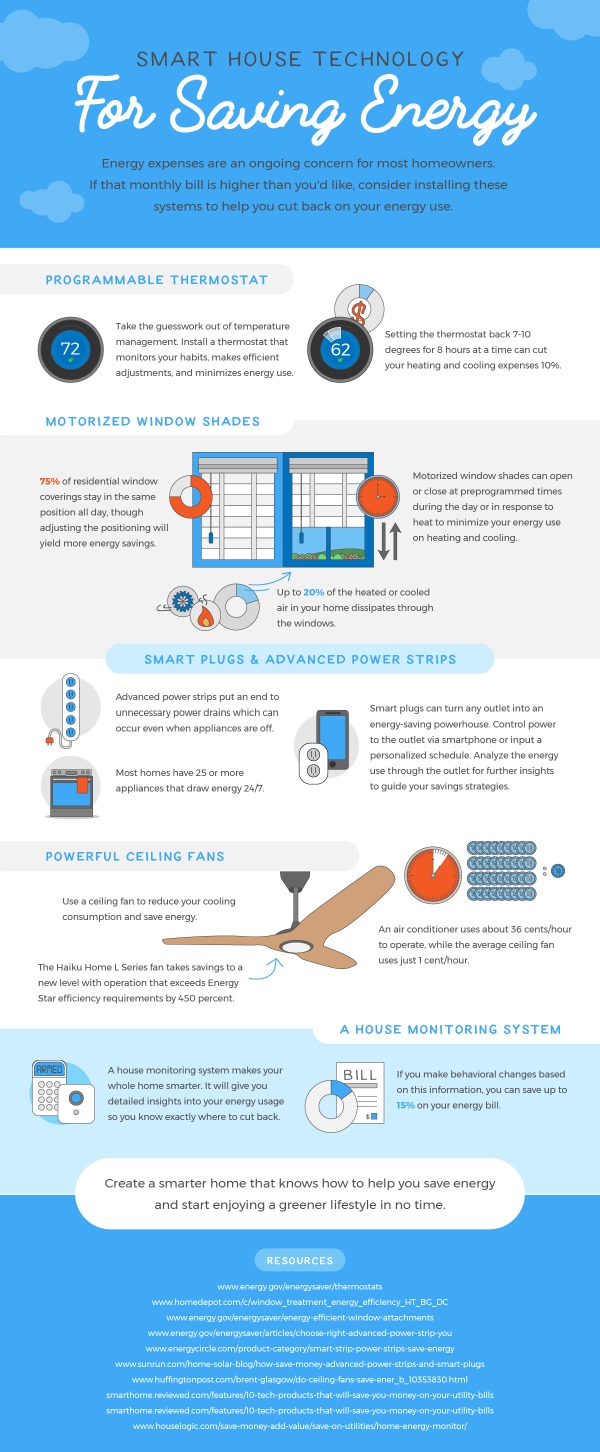Electricity is not cheap. In fact, the average cost per kilowatt-hour (kWh) in the United States in May 2018 was 13.15 cents. Unsure of what that means? A kWh is a measurement for the amount of electricity you’re using. One kWh equals the amount of electricity needed to run a 1,000-watt appliance for one hour. With that in mind, something like a 100-watt light bulb would require 10 hours of being on to consume 1 kWh of energy.
*This post is brought to you by CopyPress
Paying only 13.15 cents for 10 hours of light doesn’t sound too bad. However, when you consider all the other electronics in your home, it can really start to add up. For example, taking a six-minute shower in a 10,000-watt shower uses 1 kWh. Watching the TV for three hours burns 1 kWh. And cooking in a 2,000-watt oven for a half hour will utilize 1 kWh. Throughout the course of a single day, nearly everything you do collectively piles on to your monthly energy bill.
What is a Smart House?
Want to find ways to lower your monthly energy bill? That’s where smart house technology comes into play. Smart technology allows you to cut back on your energy usage by turning your heat or air conditioning off when you’re not at home, remotely controlling electronics, and automatically closing your window shades to keep your temperature-controlled air from leaking out. Of course, these are just a few of the ways these energy-saving systems work. To learn more about how smart technology can help in your home, check out the infographic below.

Leave a Reply